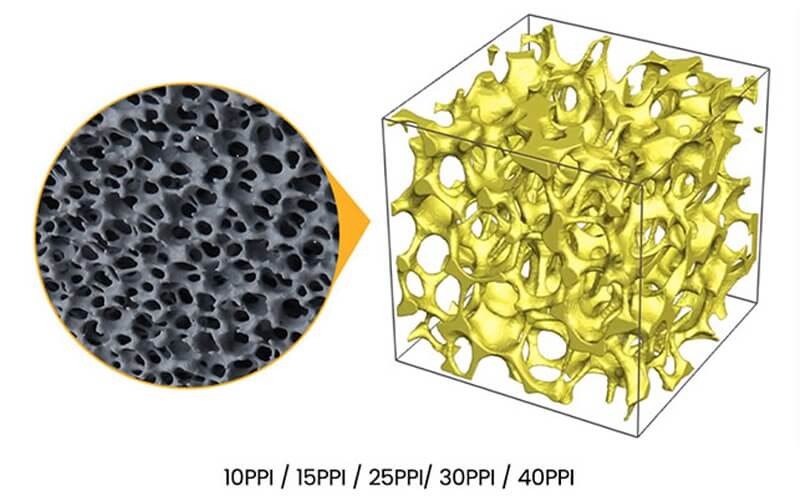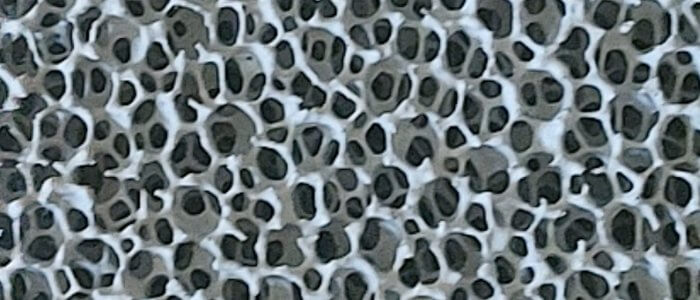Introduction:
In the intricate world of metal casting, precision, and quality are paramount. The use of ceramic foam filters has revolutionized the casting process by enhancing the overall product quality. Among the various factors that influence casting quality, the size of ceramic foam filters holds a significant position. This article delves into the complexities of ceramic foam filter sizes, their implications on casting processes, and how choosing the right filter size can elevate the quality of cast metal products.
Understanding Ceramic Foam Filters
Ceramic foam filters are porous structures made from ceramic materials with interconnected pores. These filters serve as a conduit for molten metal during the casting process, enabling the removal of impurities and inclusions before the metal solidifies. The structure of ceramic foam filters contributes to their exceptional properties, including high-temperature stability, corrosion resistance, and mechanical strength.
Factors Affecting Filter Performance
A filter’s performance is influenced by several critical factors, such as permeability, flow rate, and retention efficiency. The size of the ceramic foam filter plays a pivotal role in determining these properties. Larger filter sizes often result in higher permeability and flow rates, allowing molten metal to pass through more easily. However, smaller filter sizes can provide better retention efficiency, capturing finer impurities and particles that might compromise the casting’s quality.
Importance of Choosing the Right Filter Size
Selecting the appropriate ceramic foam filter size is essential to achieving optimal casting quality. The wrong filter size can lead to defects like porosity, inclusions, and surface irregularities. For instance, if the filter size is too large, there is a risk of inadequate impurity removal, which can lead to defects in the final product. Conversely, if the filter size is too small, it may cause excessive turbulence in the molten metal flow, potentially introducing defects.

Different Ceramic Foam Filter Size Classifications
Ceramic foam filters come in various size classifications, often characterized by parameters like pore size, cell density, and thickness. Pore size refers to the diameter of the pores within the filter structure, influencing the size of impurities that can be captured. Cell density refers to the number of pores per unit area, impacting both permeability and retention efficiency. The thickness of the filter affects its mechanical strength and durability during casting.
Effect of Ceramic Foam Filter Size on Flow Rate and Metal Cleanliness
The choice of filter size significantly influences the flow rate of molten metal during casting. Larger filter sizes generally offer higher flow rates, expediting the casting process. However, it’s crucial to balance this with the need for effective impurity removal. Smaller filter sizes tend to enhance metal cleanliness by efficiently capturing smaller impurities and preventing their passage.
Optimizing Ceramic Foam Filter Size for Specific Casting Applications
Different casting processes and metal alloys require tailored approaches to filter size selection. Aluminum casting, for example, benefits from filters with finer pores due to the smaller size of aluminum oxide inclusions. On the other hand, larger filter sizes may be suitable for iron or steel casting, where flow rate and efficiency take precedence over fine impurity capture.
Challenges in Implementing Different Filter Sizes
While varying filter sizes offer benefits, foundries may encounter challenges during implementation. Managing inventory for different filter sizes, adapting casting equipment, and ensuring consistent quality across the board can be demanding. Some foundries might choose to specialize in certain filter sizes based on their casting processes and material preferences.
Advanced Techniques in Filter Size Control
Technological advancements have paved the way for precise control over ceramic foam filter sizes. Advanced manufacturing techniques, such as 3D printing and foam replication, enable the production of filters with specific and consistent sizes. This level of control contributes to improved casting quality and better repeatability in the manufacturing process.
Industry Case Studies
Real-world examples highlight the direct impact of filter size on casting quality. A case study involving an aerospace component found that adjusting filter sizes led to a remarkable reduction in defects and increased mechanical properties. Similarly, steel foundry optimized filter sizes based on alloy-specific requirements, resulting in smoother casting processes and enhanced final products.

Future Trends in Ceramic Foam Filter Size Optimization
The future of ceramic foam filters lies in the ongoing pursuit of precision. As technologies evolve, it’s likely that filter sizes will become even more customizable and tailored to specific applications. Advances in material science may also lead to filters with enhanced properties, further enhancing their overall effectiveness in the casting process.
The cadence of innovation continues to drive the evolution of ceramic foam filter technology. As the casting industry charts a course into the future, the concept of filter size optimization takes on new dimensions. In this act of the casting symphony, technology will orchestrate an even more harmonious performance.
Nanoscale Precision:
The horizon holds the promise of nanoscale ceramic foam filters, enabling the capture of the tiniest impurities. By harnessing cutting-edge manufacturing techniques like molecular self-assembly, these filters could unlock new realms of casting purity for applications demanding microscopic precision.
Adaptive Filters:
Imagine filters with chameleon-like adaptability, shifting their properties to suit specific alloys and casting conditions. By incorporating responsive materials, these filters would adjust their permeability and retention efficiency in real-time, enhancing both casting efficiency and quality.
Digital Twin Integration:
The integration of digital twin technology could revolutionize filter size selection. By simulating casting scenarios in a virtual environment, foundries could predict the ideal filter size with uncanny accuracy, minimizing trial and error and optimizing resource allocation.
Conclusion:
The symphony of ceramic foam filter sizes orchestrates a mesmerizing ballet between casting success and defect-free perfection. From the overture of understanding filter structure to the grand finale of future trends, this exploration has revealed the nuanced interplay between filter dimensions and the quality of cast metal products.
As foundries continue to refine their artistry, the selection of the right filter size remains a pivotal decision in the casting process. Whether it’s aluminum, steel, or any other alloy, the dance between filter size and casting quality shall remain an everlasting theme.
The mantra of “exploring” encapsulates the boundless possibilities that the world of ceramic foam filter sizes offers. It’s a journey that traverses dimensions, from macroscopic filter sizes that shape the casting stage today to the microscopic precision that the future holds. As foundries take their places on this stage, they embody the dual roles of artist and engineer, weaving a symphony of perfection that resonates through the annals of metallurgical history.
In the grand auditorium of industry, where innovation and tradition converge, the impact of ceramic foam filter sizes on casting quality shall continue to unfold. Just as a well-conducted symphony evokes emotions and captivates hearts, so too shall the orchestration of ceramic foam filter sizes evoke the essence of casting excellence, enriching the world with flawless metal creations.

